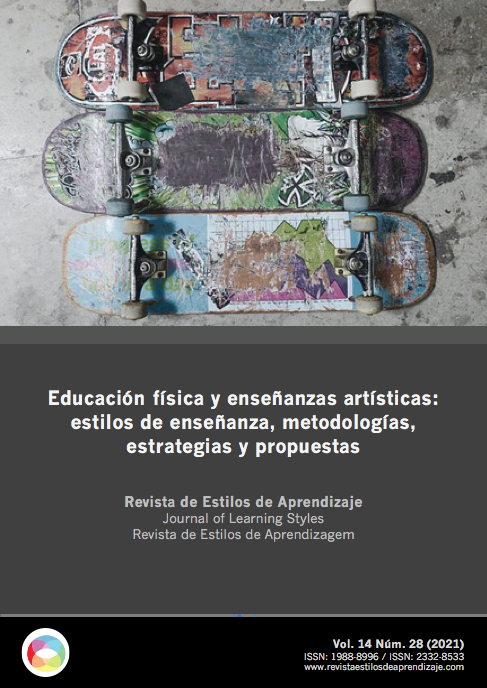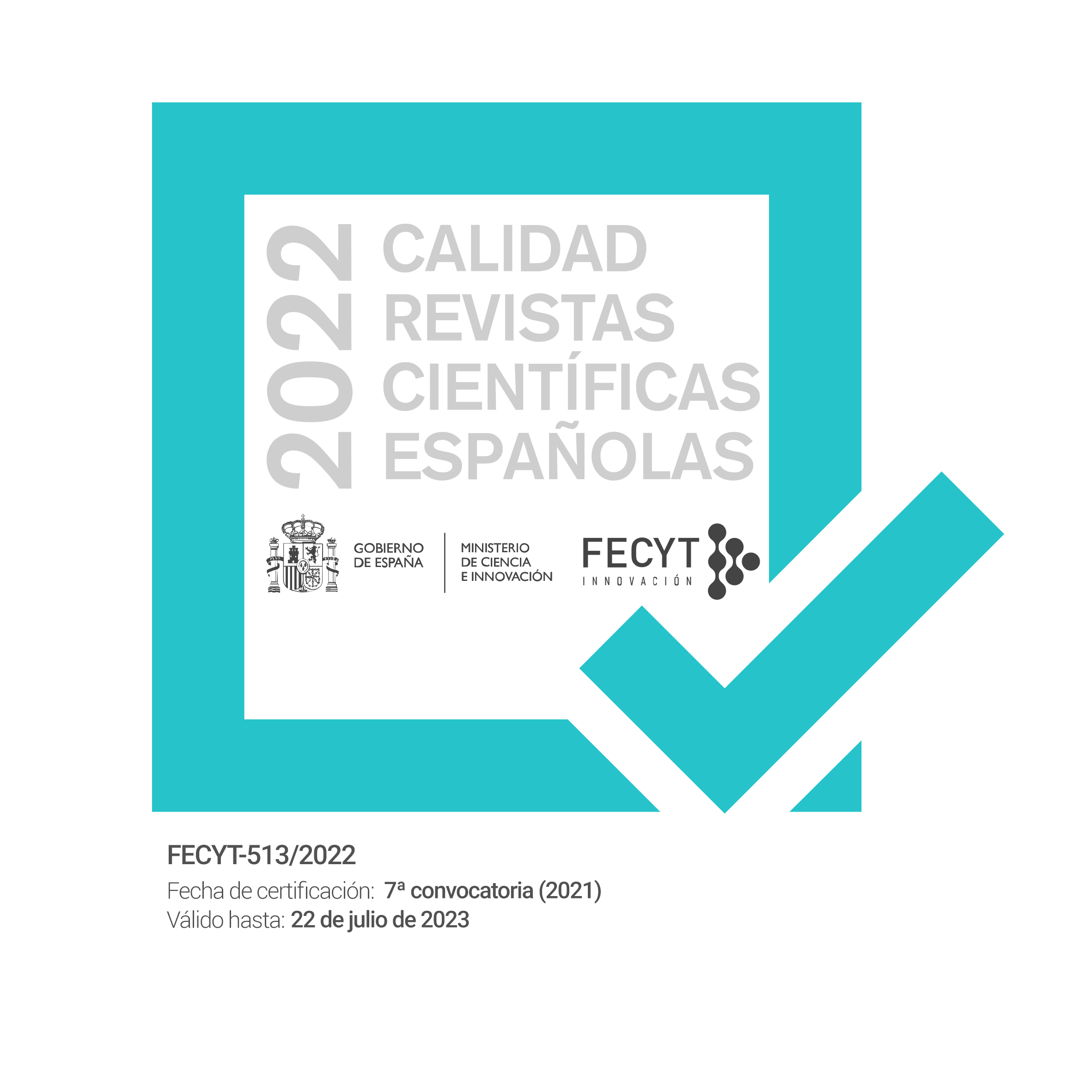An empirical foundation for planning an emerging pedagogical method of Physical Education from the predominant learning styles
DOI:
https://doi.org/10.55777/rea.v14i28.3260Keywords:
Pedagogy, Physical Education, Learning Styles, Secondary Education, Pedagogical ModelAbstract
The objective of this research was to make a contribution to the process of increasing knowledge through the exploratory empirical demonstration of an emerging pedagogical theory on the planning of sports training in Spain. For this purpose, a cross-sectional investigation was designed with a quantitative approach composed of a simple random sample of 120 students (n = 120) from secondary education and from the degree in Physical Activity and Sports Sciences, who were resident in Spain, and who were administered the Honey-Alonso Questionnaire (CHAEA) on learning styles (Alonso, Gallego, & Honey, 1994). The predominant learning styles were identified and the possible changes that occur in the learning styles of the students at their different educational stages were examined. The assumption of normality was calculated using the K-S test and the equality of variances using the Levene test. Student's t test was performed to compare the characteristics of both groups. The results showed the predominance of the "Reflective", "Pragmatic", "Theoretical" and "Active" styles, respectively. No significant differences were found in learning styles at stages studied. Given the importance that emerging pedagogical methods attach to individualised teaching it seems appropriate to discuss the planning of an emerging pedagogical method taking as a reference the characteristics of students based on the predominant learning styles.
Downloads
References
Aguilera Pupo, E. (2012). Los estilos de enseñanza, una necesidad para la atención de los estilos de aprendizaje en la educación universitaria. Revista De Estilos De Aprendizaje, 5(10). Retrieved from http://revistaestilosdeaprendizaje.com/article/view/962
Alonso, C. M. (1992). Estilos de aprendizaje: análisis y diagnóstico en estudiantes universitarios. Madrid: Editorial Universidad Complutense, 2, 361-372.
Alonso, C.M., Gallego, D. J., and Honey, P. (1994). Los Estilos de Aprendizaje. Procedimientos de diagnóstico y mejora. Bilbao: Ediciones Mensajero.
Alonso, C.M., Gallego, D. J., and Honey, P. (2005): Los Estilos de Aprendizaje. Procedimientos de Diagnóstico y Mejora. 6ª Edición. Bilbao: Ediciones Mensajero.
Alvira, F. (2000). Diseños de investigación social: criterios operativos. In M. García Ferrando, J. Ibáñez, and F. Alvira (Eds), El análisis de la realidad social. Métodos y técnicas de investigación (pp. 99-125). Madrid: Alianza Editorial.
Beltrán, J.A. (1993). Procesos, estrategias y técnicas de aprendizaje. Madrid: Síntesis, S.A.
Blanco, E. (2006). Manual de la organización institucional del deporte (Vol. 26). Editorial Paidotribo.
Bruner, J. S. (1964). The course of cognitive growth. American psychologist, 19(1), 1.
Cabrera Albert, J.S., and Fariñas León, G. (2005). El estudio de los estilos de aprendizaje desde una perspectiva vigostkiana: una aproximación conceptual. Revista Iberoamericana De Educación, 37(1), 1-10. https://doi.org/https://doi.org/10.35362/rie3712731
Cagigal, J. M. (1975). El deporte en la sociedad actual (Vol. 27). Prensa Española.
Callado, C. V. (2015). Aprendizaje cooperativo en Educación Física: estado de la cuestión y propuesta de intervención. Retos: nuevas tendencias en educación física, deporte y recreación, (28), 234-239.
Cea D´ Ancona, M. A. (2001). Metodología cuantitativa de la investigación social. Síntesis Sociología.
Cea D´ Ancona, M. A. (2004). Métodos de encuesta. Teoría y práctica, errores y mejora. Síntesis Sociología.
Chiang, M. T., Larenas, C. D., & Pizarro, P. A. (2016). Estilos de enseñanza y aprendizaje: ¿cómo dialogan en la práctica? Revista De Estilos De Aprendizaje, 9(17). Retrieved from http://revistaestilosdeaprendizaje.com/article/view/1045
Coffield, F., Moseley, D., Hall, E., y Ecclestone, K. (2004). Should we be using learning styles? What research has to say to practice (p. 82). London: Learning and skills research centre.
Consejo Superior de Deportes (2020). Anuario de Estadísticas Deportivas 2019, Madrid: Ministerio de Cultura y Deporte. Recuperado de: http://www.culturaydeporte.gob.es/dam/ jcr:47414879-4f95-4cae-80c4-e289b3fbced9/anuario-de-estadisticas-deportivas-2020.pdf
Cuta, O. E. P., Pulido, E. P. G., Cuta, O. E. P., & Geijo, P. M. (2016). Estilo de Enseñanza y Rendimiento Académico. Revista De Estilos De Aprendizaje, 9(18). Retrieved from http://revistaestilosdeaprendizaje.com/article/view/1035
del Valle Díaz, M. S., y de la Vega Marcos, R. (2008). La regulación de la representación en los modelos emergentes en el Deporte. Perspectiva cognitiva. Retos: nuevas tendencias en educación física, deporte y recreación, (13), 19-27.
Espada, M. (2011). La educación en valores en el área de Educación Física y en el deporte escolar. La Peonza: Revista de Educación Física para la paz, (6), 51-55.
Espada, M. (2012). La inteligencia emocional en el área de Educación Física. La peonza: Revista de educación física para la paz, (7), 65.
Ferrando, M. G., & Llopis-Goig, R. (2011). Ideal democrático y bienestar personal: encuesta sobre los hábitos deportivos en España 2010. CIS.
García Ferrando, M (2006). Veinticinco años de análisis del comportamiento deportivo de la población española (1980-2005). Revista internacional de sociología, vol. 44, p. 15-38.
García Ferrando, M. (2006). Veinticinco años de análisis del comportamiento deportivo de la población española (1980-2005).
Gómez del Valle, M. y otros. (2003). Identificación de los Estilos de Aprendizaje predominantes en estudiantes de magisterio de la Facultad de Ciencias de la Educación de la Universidad de Cádiz. Revista Electrónica Interuniversitaria de Formación del Profesorado, 6 (2).
González Peiteado, M. (2013). Los estilos de enseñanza y aprendizaje como soporte de la actividad docente. Revista De Estilos De Aprendizaje, 6(11). Retrieved from http://revistaestilosdeaprendizaje.com/article/view/971
Honey P., and Mumford, A. (1992). The Manual of Learning Styles, 3rd. Maidenhead, P. Honey, Berkshire, UK.
Honey, P., and Mumford A. (1986). The manual of learning styles. Maidenhead, Berkshire: Peter Honey.
Honey, P., and Munford, A. (1986). Using our Learning Styles. P. Honey, Berkshire, UK.
Inhelder, B., Chipman, H. H., & Zwingmann, C. (Eds.). (1976). Piaget and his school: a reader in developmental psychology. Springer.
Keefe, J. (1988). Aprendiendo Perfiles de Aprendizaje: manual de examinador. Reston, Virginia: NASSP.
Lago, B., Colvin, L., and Cacheiro, M.L., (2008). Estilos de aprendizaje y actividades polifásicas: modelo EAAP. Revista de estilos de aprendizaje (1, n.2), 2008, p.2-21.
Lucila, N. and Eugenia, E. (2008). Diagnóstico de Estilos de Aprendizaje en alumnos de educación media superior. Revista digital universitaria. 9 (2).
Martínez del Castillo, J. (1994). Un Modelo de Planificación en las Organizaciones Deportivas Municipales. Revista Española de Educación Física y Deportes, 1 (1), 27-34.
Martínez del Castillo, J. (1995). Los Modelos de Planificación en las Organizaciones Deportivas. Nuevos enfoques y retos. Revista Española de Educación Física y Deportes, 2 (1), 39-47.
Martínez del Castillo, J. (2014). Las funciones profesionales de los titulados universitarios en Ciencias de la Actividad Física y del Deporte. Extra Profesiones, Nº 150. 1-2.
Martínez, P. (2004). Investigación y análisis de los Estilos de Aprendizaje del profesorado y de sus alumnos del primer ciclo de Educación Secundaria Obligatoria Laredo. Cantabria. España. Síntesis de su trabajo de tesis presentado en el I Congreso Internacional de Estilos de Aprendizaje. UNED. España.
Mateu, P., & Marques, R. F. R. (2020). Ejercicio físico en tiempos de aislamiento social: una reflexión bourdieusiana sobre gustos y distinción. Sociología del Deporte, 1(1), 51-60.
Ministerio de Consumo (2020). Aladino 2019 Informe breve estudio sobre la alimentación, actividad física, desarrollo infantil y obesidad en España 2019. Agencia Española de Seguridad Alimentaria y Nutrición.
Mosston, M. (1988). La enseñanza de la Educación Física. Paidos.
Mosston, M., & Ashworth, S. (1986). Teaching physical education.
Mosston, M., & Ashworth, S. (1990). The Spectrum of Teaching Styles. From Command to Discovery. Longman, Inc., 95 Church St., White Plains, NY 10601-1505.
Oña, A. (2002). La ciencia en la actividad física: Viejos y nuevos problemas. European Journal of Human Movement, (9), 9-42.
Orellana, N., Bo, R., Belloch, C. and Aliaga, F. (2002). Estilos de aprendizaje y utilización de las TIC en la enseñanza superior. En Actas de la Conferencia Internacional sobre Educación, Formación y Nuevas Tecnologías [Comp.] (p. 117). Valencia: AEFVI.
Ortiz Sánchez, J., del Pozo-Cruz, J., Alfonso-Rosa, R., Gallardo-Gómez, D., & Álvarez-Barbosa, F. (2020). Efectos del sedentarismo en niños en edad escolar: revisión sistemática de estudios longitudinales (Effects of sedentary school-age children: a systematic review of longitudinal studies). Retos, 40, 404-412. https://doi.org/10.47197/retos.v0i40.83028
Parlebas, P. (1967). L’education physique en miettes. revue EPS, 85(7).
Parlebas, P. (1993). Educación física moderna y ciencia de la acción motriz. In I Congreso Argentino de Educación Física y Ciencias (La Plata, 8 al 12 de septiembre de 1993).
Piaget, J. (1980). Teoría del desarrollo cognitivo de Piaget. Creative Commons Attribution-Share Alike, 3, 1-13.
Piaget, J. (1981). La teoría de Piaget. Infancia y aprendizaje, 4(sup2), 13-54.
Requena, S. H. (2008). El modelo constructivista con las nuevas tecnologías: aplicado en el proceso de aprendizaje. RUSC. Universities and Knowledge Society Journal, 5(2), 26-35.
Rodríguez, A. C., Matute, J. F., Otín, C. C., & Anzano, A. P. (2014). Las competencias específicas en las webs de los grados universitarios de Ciencias de la Actividad Física y Deporte. Retos. Nuevas tendencias en Educación Física, Deporte y Recreación, (25), 43-47.
Downloads
Published
How to Cite
Issue
Section
License
By submitting the original, the author(s) declare that they are aware of and accept, in full, the privacy policy as well as the copyright of the Learning Styles Magazine.
The Learning Styles Magazine offers free and open access to its content, completely free of charge, in order to bring scientific research to its readers and society in general. All digital contents are free and open access and are published under a Creative Commons license:

Rights are granted under the Creative Commons Reconocimiento-NoComercial-SinObraDerivada 4.0 Internacional (CC-BY-NC-ND 4.0)
The Learning Styles Magazine is an open access journal. Publication of articles or reviews in the Journal does not entitle you to any remuneration. For authors as well as readers, the journal is free Creative Commons Reconocimiento-NoComercial-SinObraDerivada 4.0 Internacional (CC-BY-NC-ND 4.0).
With this licence, the reproduction and dissemination of the contents of the magazine for educational, social and knowledge transmission purposes is permitted, without any profit motive in mind, provided that the source and authorship are not modified. The licence granted to Learning Styles Magazine allows the copying and distribution of the magazine's contents, as long as the authorship of the work is recognised, correctly specifying the author and the publishing entity. The work may not be used for commercial purposes, nor may it be altered, transformed or generated from this work.
The publication of articles or reviews in the Journal does not give the right to any remuneration.
The Learning Styles Journal invites the author/authors to increase the visibility and scope of their articles published by re-disseminating them in:
- Web spaces and personal networks, as well as in scientific meetings and forums
- Open institutional archives in Universities, educational repositories and Research Centres.
- Academic and scientific networks (Researchgate, Academia.edu, Plubons, etc.)
All these spaces and publications must include all the bibliographic data of the publication.

























